Mastering Wastewater Monitoring | Essential Safety Practices for Hazardous Areas
Hazardous areas are common in wastewater treatment plants due to the gases released during wastewater processes. These gases pose a fire risk when exposed to ignition sources such as electrical equipment. To address these risks, it’s crucial to follow guidelines established by the National Fire Protection Association (NFPA).
Understanding the Fire Triangle
For a fire or explosion to occur, three components must exist simultaneously: fuel or a flammable substance, an oxidizer (typically oxygen), and a source of ignition. In wastewater treatment, flammable gases, particularly methane, serve as the fuel. Oxygen from the atmosphere acts as the oxidizer, while heat or sparks from electrical equipment are the most common sources of ignition.
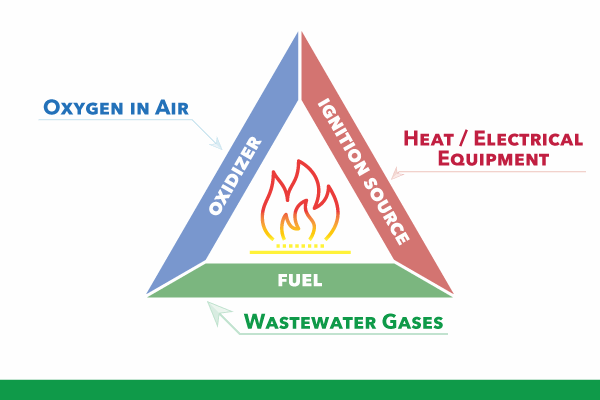
Triangle showing the three components that must exist simultaneously for a fire or explosion to occur
Understanding the Classification and Division System
NFPA Section 820 categorizes hazardous areas within wastewater treatment facilities using a class and division system. This system classifies areas based on the nature of the hazardous material present and the likelihood of its presence during normal operation. Division 1 indicates the substance is present during normal operation, while Division 2 indicates its presence only during abnormal operation, such as in the case of equipment breakdown or fault. Classes and divisions are further categorized into groups which define the general nature of the flammable material present.
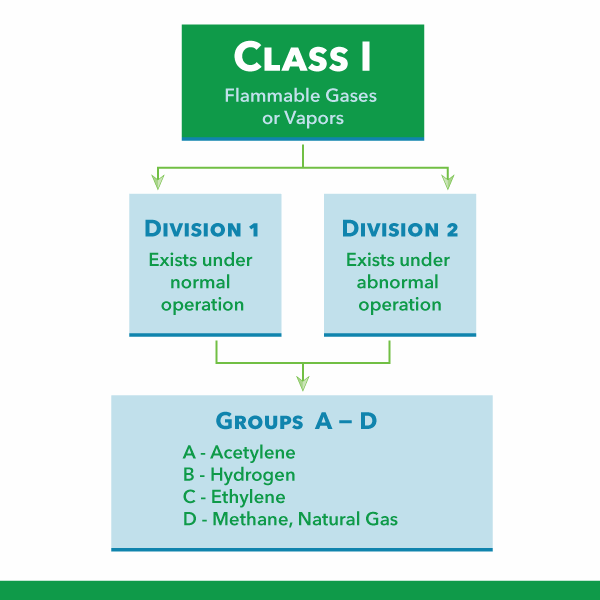
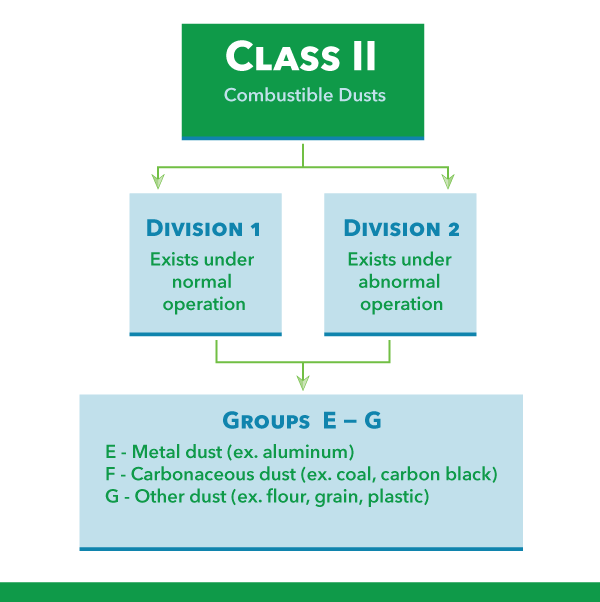
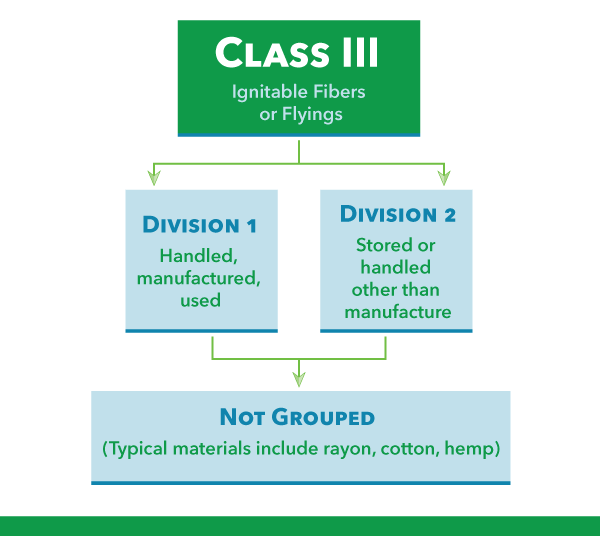
Overview of class and division system used to define hazardous locations
Common Classifications in Wastewater
The most common classifications in wastewater include Class I, Division 1 or 2, Group D, where methane gas from sludge degradation is prevalent. A less common classification for wastewater is Class II, Division 1 or 2, Group G, which pertains to dried sludge dust, such as in the case of sludge drying applications.
Identifying Hazardous Areas in Wastewater
NFPA Section 820 outlines hazardous ratings for various areas within a wastewater treatment plant. Class 1 hazardous zones typically include collection systems, inlet treatment processes, primary clarifiers, as well as aeration basins when they are not preceded by primary clarifiers. Additionally, any sludge-handling process is considered Class 1. The degree of hazard and whether the zone is defined as Division 1 or 2 depends on factors such as enclosure and ventilation.
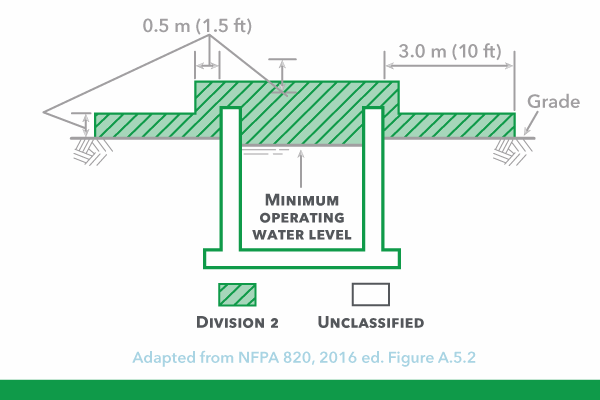
Diagram of primary clarifier from NFPA section 820 showing bounds of Class 1 Division 2 area. The same bounds apply to aeration basins not preceded by primary clarifiers.
Protection Methods for Class 1 Areas
NFPA Section 70, also known as the National Electric Code, describes the proper design and installation of electrical equipment in classified hazardous areas to ensure it does not become the source of ignition within a wastewater treatment facility.
Designing electrical systems for safe use in hazardous areas often involves implementing intrinsically safe (IS) systems. These systems reduce power, voltage, and current to non-spark forming levels. Components of an IS system include intrinsically safe field devices (like a sensor), safety barriers, and non-incendive field wiring which is incapable of producing a spark.
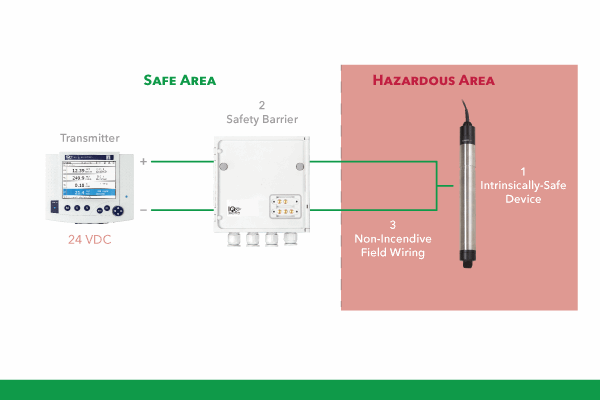
Diagram showing three components of an intrinsically safe system.
For an intrinsically safe system, the IS field sensor is installed in the hazardous area while the safety barrier and controller are installed outside. The safety barrier ensures no voltage or current above its specified values should be delivered to the sensor in the hazardous zone, even in the case of fault.
Online Instrumentation for Hazardous Areas of Wastewater
YSI offers a range of online instrumentation rated for Class 1 Division 2 areas. These include sensors for measuring dissolved oxygen (DO), pH, oxidation-reduction potential (ORP), total suspended solids (TSS), and ion-selective electrode (ISE) sensors which can measure ammonium, nitrate, chloride, and potassium. Each sensor should be purchased with a barrier box module, which acts as a safety barrier in hazardous locations.
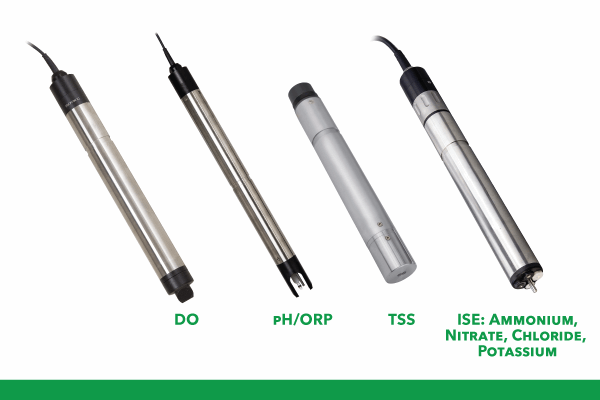
YSI Class 1 Division-2 sensor offering
Layout Example for Online Sensors
In Class 1 Division 2 locations, sensors are placed within the hazardous area, while the barrier box is installed outside the bounds of the hazardous zone. The wiring connected to the sensor is considered non-incendive, as its electrical energy is limited by the barrier box.
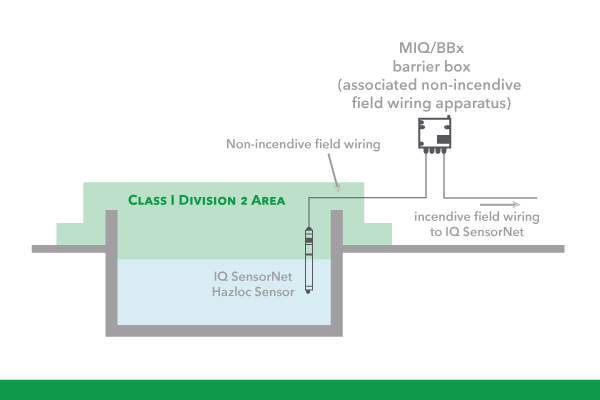
General Class 1 Division 2 sensor installation
Explosion-Proof Enclosure
In situations where placing the barrier box outside the hazardous area is not feasible, controllers and barrier boxes can be installed within explosion-proof enclosures. These enclosures contain any explosion that may occur and prevent it from spreading, ensuring safety within the hazardous area.
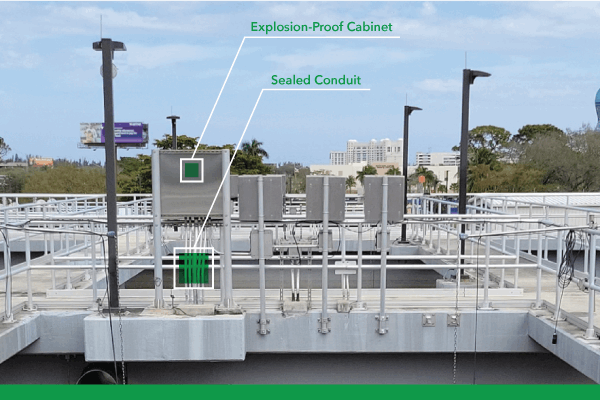
Class 1 Division 2 application example at Seminole Trible in Hollywood, FL. Controllers and barrier boxes were installed within the 10’ hazardous area boundary in explosion-proof cabinets.
Conclusion
Safe wastewater monitoring in hazardous areas requires careful consideration of classification, proper installation of electrical equipment, and the use of appropriate safety measures. By adhering to NFPA guidelines and employing suitable instrumentation and protection methods, the risks associated with wastewater treatment can be effectively mitigated.

Sources:
- Global Methane Initiative, Municipal Wastewater Methane
- Hazloc Directory, Fundamentals of an Intrinsically Safe System
- NEMA Enclosures, Class 1, Div 2 Enclosure Protection
- NFPA, 70 National Electric Code 2023
- NFPA, 820 Standard for Fire Protection in Wastewater Treatment and Collection Facilities 2024
- Plant Engineering, Understanding the hazardous locations classification system